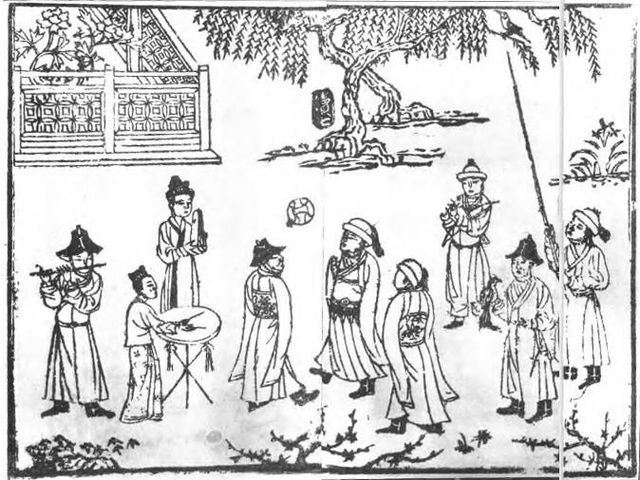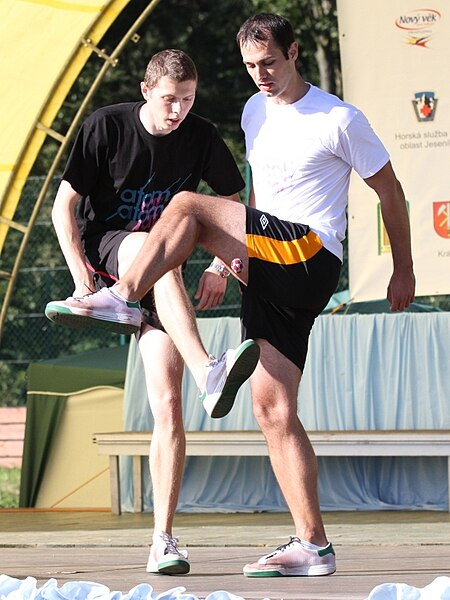Cuju or Ts'u-chü (蹴鞠) is an ancient Chinese ball game. FIFA cites Cuju as one of the earliest competitive ball games using the feet, but also that it did not influence any modern ball game. It is a competitive game that involves both teams trying to kick a ball through an opening into a central hoop without the use of hands whilst ensuring the ball does not touch the ground. This is similar to how hackey-sack is played today and the sport resembles a mix of basketball, soccer and volleyball. Descriptions of the game date back to the Han dynasty, with a Chinese military work from the 3rd–2nd century BC describing it as an exercise. It was also played in other Asian countries like Korea, Japan and Vietnam.
Chinese women playing cuju, by Ming dynasty painter Du Jin
One Hundred Children in the Long Spring (長春百子圖), a painting by Chinese artist Su Hanchen (蘇漢臣, active AD 1130–1160s), Song dynasty
Bronze mirror dating to the Song dynasty
Yuan dynasty illustration in Shilin Guangji by Chen Yuanjing
A footbag is a small, round bag usually filled with plastic pellets or sand, which is kicked into the air as part of a competitive game or as a display of dexterity. "Hacky Sack" is the name of a brand of footbag popular in the 1970s, which has since become a generic trademark.
A crocheted footbag
Hacky Attack playing field
The most successful footbag doubles team, multiple world champions and innovators Martin Sladek and Tomas Tucek
Eric Wulff executing a Roll spike at the 2008 Green Cup, San Francisco








